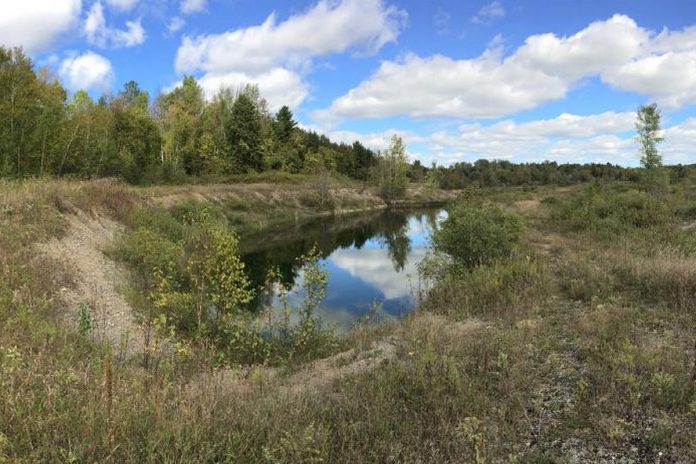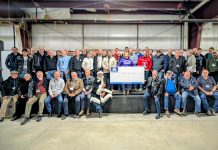
A new conservation area in Otonabee-South Monaghan Township has been named the Mikinaak Conservation Area in recognition of the area’s Indigenous peoples, with plans to open the conservation area to the public for recreational use.
Located near Crowley Line and Rosa Landing Road, the Mikinaak Conservation Area was once a licensed gravel pit that Otonabee Conservation originally acquired in 1977, with the intent of conserving a section of wetland shoreline on the Otonabee River and developing a conservation area after the aggregate was depleted.
After aggregate extraction stopped in the late 1990s, the area naturally regenerated with many features including functional wetlands that provide homes to a variety of flora and fauna. In January 2023, the Ministry of Natural Resources surrendered the gravel pit license and Otonabee Conservation announced its plan to manage the property as a conservation area.
“We look forward to protecting the natural habitats, diverse species, and surrounding sensitive ecological features of this property,” said Otonabee Conservation manager of conservation lands Jessie James at the time.
The Ministry of Natural Resources determined the property in its current state provides ecological value for the adjacent Otonabee Midriver Complex provincially significant wetland and as species at risk habitat — in particular for nesting turtles.
Through a collaborative effort between Otonabee Conservation and Hiawatha First Nation, the new conservation area has been named the Mikinaak Conservation Area, with “mikinaak” meaning turtle in the Mississauga Ojibwe language.
“The renaming of this conservation area is a meaningful step in recognizing the deep historical connection that the Michi Saagiig Anishinaabe people have to this land,” said Otonabee Conservation board chair Michael Metcalf. “This partnership with Hiawatha First Nation is an example of our shared commitment to fostering a deeper understanding of the land we protect.”
Tom Cowie of Hiawatha First Nation’s core consultation and land resource development worked with Otonabee Conservation staff on the renaming process, noting that Indigenous place names are typically descriptive to reflect both the land’s features and what exists there.
“It has been a positive experience sharing Michi Saagiig knowledge with this project,” Cowie said. “Having it named in Michi Saagiig dialect acknowledges our historical footprint on these lands.”
Because most of the area of the property that was previously used as a gravel pit has naturally regenerated over time, further rehabilitation work is not necessary on the property.
As well as managing the site for conservation purposes, Otonabee Conservation intends to open the property up for recreational pursuits such as hiking and birdwatching.
Otonabee Conservation says more information about plans to open the site to visitors will be available in the coming months.


























